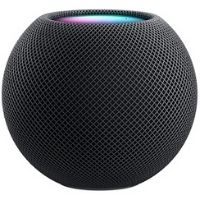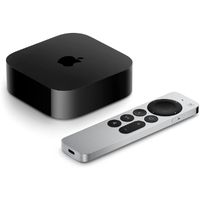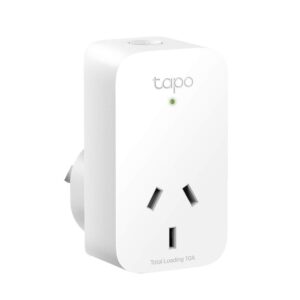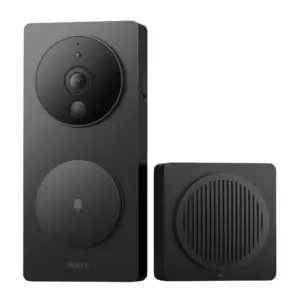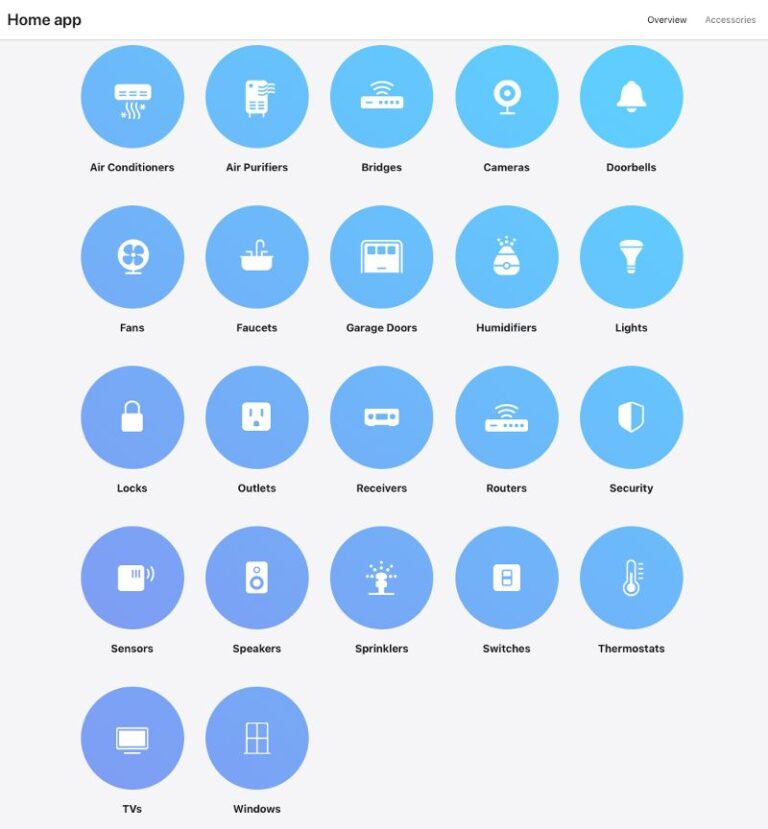Every iPhone comes with the Apple Home app, giving you a smart home jack-of-all-trades in your pocket. The key to unlocking Apple HomeKit’s best features is installing devices throughout your home. We’ll walk you through the basics of HomeKit alongside fun extras in this guide.
Ultimate guide to Apple HomeKit
Getting to know Apple HomeKit

What is Apple HomeKit?
Apple HomeKit is a smart home platform that works with Apple devices such as the iPhone, iPad, and HomePod. Apple doesn't make smart home devices; it allows compatibility with third-party products that obtain a HomeKit certification.
The HomeKit certification is available only to devices that meet Apple's technical and security requirements.
Much like most of Apple's products and services, Apple HomeKit does not work on third-party operating systems like Android or PC. We recommend using Amazon Alexa or Google Assistant if you don't have an iOS device.
How do you use Apple HomeKit?
There are two ways to use Apple HomeKit:
- Apple Home app on your iPhone, iPad, or Mac (also works with Shortcuts, Control Center, and widgets)
- Siri voice command on your iPhone, iPad, Apple Watch, HomePod speaker, Mac, or Apple TV—"Hey Siri"
When setting up devices, you scan an eight-digit number or a QR code to add them to the app. You can also add some devices automatically using the iPhone's built-in NFC reader. Then, you organise each HomeKit accessory into different rooms and zones in your home. Now, you can tell Siri to dim the lights in the bedroom or adjust the temperature in the bedrooms.
While many HomeKit devices work using standalone apps, you'll need one of the following hubs in your home for remote access controls through the Apple Home app: HomePod, Apple TV, or iPad.
Without a hub, the Apple Home app works only with devices in Bluetooth range or on the same Wi-Fi network. An Apple Home hub also allows you to schedule and automate your HomeKit products.
Apple smart speakers
Apple HomePod smart speakers give you complete control over your smart home through Siri voice commands. The company's HomePod models are more luxurious than the similar fare from Amazon and Google, justifying the higher price.
Apple HomePod mini
Price accurate as of post date. Read full disclaimer.
The Apple HomePod mini is Apple's budget smart speaker option and most closely competes with the Amazon Echo Dot and the Google Nest Mini in terms of size—it's about the same size and shape as the latest Echo Dot. But at $149, it's twice the price of the competition.
To Apple's credit, HomePod mini has the best sound of the trio, but users say it isn't quite at the level of Google and Amazon's larger smart speakers (which sell for around $169). HomePod mini is one of the most visually appealing speakers on the market, thanks to a diamond-pattern fabric cover that comes in five bold colours and the multicolour LEDs on the volume controls.
Because it's such a small speaker, the HomePod mini is perfect for smaller spaces like bedrooms and kitchens—or you can pair two or more speakers together for larger rooms.
The HomePod mini is compatible with Thread (its only technical advantage over the HomePod). Thread is a lesser-known smart home platform that doesn't require Wi-Fi or Bluetooth connections. HomePod mini won't work with every Thread device because it supports only HomeKit- and Matter-certified Thread products.
Apple smart displays
Apple doesn't have any native smart displays like Alexa and Google. Instead, it integrates HomeKit controls into its Apple TV streaming devices. Just hop into the Home app or ask Siri using your remote control.
Apple TV
Are you Netflixing in your bedroom or hosting a movie night? The Apple TV 4K has your back with the latest Dolby video and audio standards. It performs well if you want a simple streaming device with some of that signature Apple flair.
The Apple TV 4K Wi-Fi + Ethernet isn't all that different from the base model, but it doubles the internal storage to 128 GB and adds Thread device support. This means it can control HomeKit and Matter Thread devices as a Thread Border Router—it's basically a smart hub of sorts.
Room-by-room guide to Apple HomeKit
Here are some tips for using Apple HomeKit and Siri throughout your home.

Bedroom
Getting out of bed can be a chore for the best of us—so it's nice to have some help from your HomeKit smart home. Learn how a HomeKit device can make the most of your mornings and nights.
A. Start your day on time
Replace your alarm clock with a HomePod mini, and tell Siri to set the alarm to wake you up in the morning. You can even customise your alarm to play your favourite song or radio station.
B. Get comfy
Whether you're too hot or too cold, you can ask Siri from bed to adjust the temperature on a HomeKit-enabled smart thermostat. Better yet, jump into the Apple Home app and set a schedule to change the temperature automatically before you wake up.
C. Control your lights
It's too easy to forget to turn off the light before jumping into bed, but you can control them remotely through HomeKit—goodbye crawling from the covers to hit a pesky light switch.

Like other smart speakers, you can set up your HomePod minis to work as intercoms to speak with people in different rooms—just ask Siri or use the Home app. Apple's intercom even links with the iPhone, iPad, iPod touch, and Apple Watch to cast a wider net for help bringing in the groceries.
Living room
The living room is the heart of your house so it makes sense that it should be the base of operations for you and your family. Explore some options for boosting your living room to new heights.
A. Stay in the know
Siri can read your schedule with its Personal Update feature. This gives you information about your calendar, reminders, weather forecast, and travel times to help you know what to expect for the day. It's perfect for keeping track of a surprise storm so you can call your boss about working from home for the day.
B. Create some ambiance
Add some color-changing smartbulbs—like Philips Hue, LIFX, or Nanoleaf—to your living room to help you set the ultimate mood for work, play, and everything in between.
C. Watch your favourite show
Set up a shortcut to turn down the lights, turn up the sound, and turn on the Apple TV while you settle in for some quality time with your favourite show.
D. Find your iPhone
When you forget the last place you left your iPhone, ask Siri on your HomePod for a little help sounding your ringer. Just make sure you set up the Find My app on your iPhone first.
E. Set a homework reminder
After a long school day, homework is often the last thing on your child's mind. Help them finish it early with a well-timed reminder before they jump into Minecraft or onto the trampoline.
Apple allows you to pair HomePod devices together for enhanced audio. Your guilty-pleasure album can play in stereo sound or multi-room audio. This isn't a unique feature since other brands have it, but it's so invigorating to fill your home with music instead of confining it to a single room.

Kitchen
HomeKit can make your kitchen more helpful with a smart plug and asking Siri for cooking advice—see what it offers in the culinary department.
A. Put on a pot of coffee
Hook your coffee maker up to HomeKit-enabled smart plugs like Tapo devices for a quick cup on command. All it takes is a little prep setting up the machine the night before to achieve hands-free coffee the next day.
B. Plan your next trip to the store
Ask Siri to add items to your grocery list so you have them handy in the Reminders app on your next expedition to the supermarket. Or, better yet, share the list with your partner and have them take care of it.
C. Get cooking
While Siri can’t walk you through recipes from the internet like other voice assistants, you can still use it to search for recipes on your iPhone, set timers, make quick conversions while cooking, and toggle between apps with different recipes.
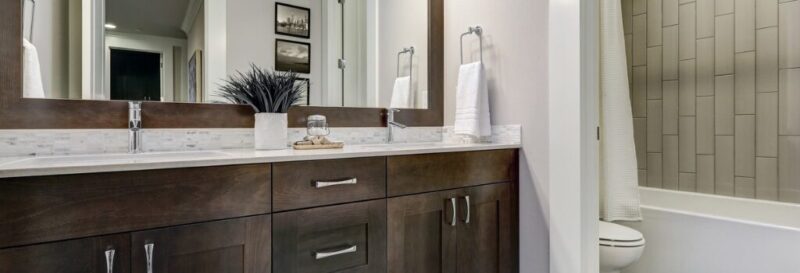
Bathroom
Bathrooms are probably the last place you'd think about for high-tech smart home gadgets, but hands-free controls are a huge advantage in the porcelain palace. Here are some ideas worth trying.
A. Manage your meds
Set up a reminder with Siri to take your prescriptions. This is especially helpful if you need to keep track of medications throughout the day. Or you can set a timer at dinnertime to remind you how long to wait until your after-meal medicine.
B. Sing in the shower
Having voice control over your music frees up your hands for hygiene—singing into the showerhead like a microphone is optional.
C. Wash your hands
Next time you wash your hands, ask Siri for "washing hands music" or "washing hands timer" to help you wash for 20 seconds.

Front and back yards
Whether you want to watch for threats or save on your water bill, Apple Home can upgrade your yard. Check out some of our favorite ways to use HomeKit outside.
A. Check for visitors
Installing a security camera or video doorbell helps you know when guests show up (welcome or otherwise). You can even record video directly to your paid iCloud storage if the camera supports HomeKit Secure Video, like Aqara's video doorbells and security cameras.
B. Lock up
Be your very own keymaster with a smart lock or smart garage door opener. Just ask Siri to lock the front door or if the garage is open.
C. Shine a light
Get some smart lights for your outdoor fixtures and program them to turn on at night or when your cameras detect motion.
D. Save water
A smart sprinkler system like Eve Aqua can keep the grass on your side greener. It's also a great tool for reducing your water consumption since you can easily set a custom schedule and delay watering when it rains.
Apple HomeKit FAQ
Siri is roughly on the same level as Amazon and Google when it comes to voice commands for controlling smart home gear and answering questions. But it doesn't offer as much flexibility and customisation since it won't work on a non-Apple device.
HomeKit support is worth it if you're a committed iPhone user, if Siri is your go-to digital assistant, and if you place a priority on your privacy. Otherwise, you can save a bit of cash by choosing a competing platform like Google Assistant or Amazon Alexa.
Yes, but you need to have a HomeKit hub device to connect your home to the internet: HomePod, iPad, and Apple TV.
Yes, but you won't have access to Siri, automations, and HomeKit devices that use the cloud.
Apple HomeKit is probably more secure than Amazon Alexa and Google Assistant because Apple enforces strict security requirements before certifying compatible devices. Apple also doesn't tend to use Siri or HomeKit to collect data without your permission (or it tells you exactly what it's taking). Its two main competitors can’t say the same.
Still, every piece of technology is vulnerable to security threats—we recommend protecting your smart home from hacking by equipping your Apple ID with a strong password and two-factor authentication. Don't forget to regularly update your apps and devices to eliminate security threats as developers discover and fix them.
Nearly every category of smart home device has products with Apple HomeKit compatibility—except robot vacuums.
Notable brands with HomeKit devices:
- Smart thermostats: Ecobee, Honeywell Home, Sensi
- Smart lighting: LIFX, Lutron, Nanoleaf, Philips Hue
- Smart outlets: Eve, iDevices, Wemo
- Smart locks: August, Kwikset, Schlage, Yale
- Security cameras: Arlo, Eufy, Somfy
- Sensors: Fibaro, First Alert OneLink, iHome
- Video doorbells: Logitech, Netatmo
- Garage door openers: Chamberlain MyQ, LiftMaster MyQ
- Air purifiers: Coway, Molekule
- Humidifiers: De'Longhi
Screenshot of Apple's directory of home accessories that work with the Apple Home app.

